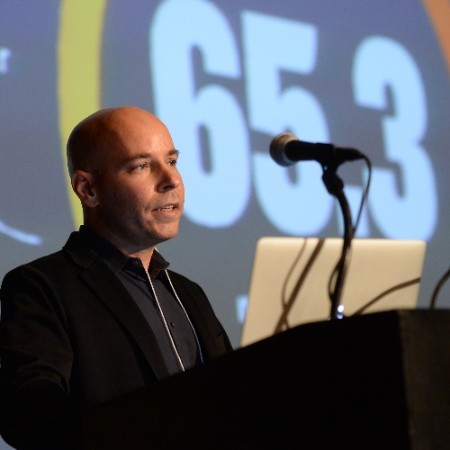
If I ask you to describe Uber -- the ride-sharing service -- in one word, what would it be? Probably words like app, better, convenience, surge pricing, luxury, service, sharing, fun, cashless and future would come up.
My guess however is that the most popular word would be ‘disruptive.' Why? Just look at the headlines of articles focusing on Uber: “Invasion of the Taxi Snatchers: Uber Leads an Industry's Disruption,” “Airbnb, Coursera, and Uber: The Rise of the Disruption Economy,” “Disruptions: Ride-Sharing Upstarts Challenge Taxi Industry,” are just some of the many examples you can find online with the combination Uber + disruption.
But what does it actually mean? In most cases describing Uber as disruptive or a disruptive innovation refers to the notion that the company brought a fundamental change, not just small-scale modifications, to the taxi market -- reinventing in a way the whole taxi experience.
Now, while obviously Uber seems to meet the definition of disruptive innovation as most people understand this concept, it would be interesting to see if Uber actually meets the criteria for disruptive innovation defined by the person who actually coined and popularized the term – Prof. Clayton M. Christensen.
First, here’s a reminder of what Christensen meant when he was talking about disruptive innovation. According to Christensen, disruptive innovation is “a process by which a product or service takes root initially in simple applications at the bottom of a market and then relentlessly moves up market, eventually displacing established competitors.” Christensen distinguishes this type of innovation from ‘sustaining innovation,' which he describes as an attempt to bring better products to established customers in existing markets.
So now that we have a better idea of what Christensen was talking about, let’s dive into specific criteria differentiating disruptive innovation from sustaining innovation and see if Uber meets these criteria. Luckily for us, Scott Anthony, managing partner of the innovation and growth consulting firm Innosight (which Christensen founded) and expert on disruptive innovation, did just that on the HBR blog.
The first criterion, Antony explains, for the would-be disruptor is to “follow an approach that makes it easier and more affordable for people to do what historically has mattered to them." In other words, the appeal of disruptive innovations is based on their simplicity, convenience and affordability. Uber no doubt meets the first two, but probably fails on the last; it is considered to be more expensive than taxis, or very similar in its pricing at best, but definitely not significantly more affordable.
Uber’s pricing points however are dynamic not static, for better or worse. The company notoriously uses surge-pricing tactics, where fares are adjusted to reflect demand and can spike up to seven or eight times the norm during snowstorms or holidays. As Annie Lowrey reported in the New York Times Magazine, even customers that are less sensitive to price like Jessica Seinfeld Instagrammed a receipt for a $415 Uber ride with the hashtags #neverforget, #neveragain and #real.
Nevertheless, the company is also reported to drop prices in some cities as part of its price war with Lyft. The result is that, as the Wall Street Journal reports, Uber is now not always the most expensive alternative, and sometimes it’s actually the cheaper one compared to taxis and other car-sharing services.
The second criterion according to Anthony is that “the innovator has to develop a behind-the-scenes advantage: a way of producing a product or service that seems magical from the customer’s perspective and that is difficult for other companies to replicate.” He believes, and I agree with him on this point, that Uber looks solid here with its powerful back-end system that “allows it to manage a real-time network of cars in an extremely simple and potentially low-cost way.” I’m not sure though that Uber’s model is not replicatable, especially when the regulatory system -- which right now is a barrier to entry in many markets -- will adapt to allow similar innovation.
The final criterion, Anthony explains is “whether the would-be disruptor is following a business model that takes advantage of “asymmetries of motivation." In simple terms, that means a disruptor is attacking markets that existing companies are motivated to exit or ignore because they are unprofitable or seemingly too small to matter.
Apparently, Uber doesn’t meet this criterion at all, as it targets traditional taxi customers with some focus on urban, busy consumers that look for convenience and a better experience than the current one provided by taxis.
So the bottom line is that Uber meets less than two (two-thirds of the first and the second) out of the three criteria mentioned above. In other words, it doesn’t really pass the Christensen test for disruptive innovation.
So what would Christensen call Uber? It’s a good question as Uber has some characteristics of disruptive innovation -- simple, easy, convenient and a great customer experience (though not always), as well some characteristics of sustaining innovation – bringing better products to established customers in existing markets and higher prices.
If anything, it seems that Uber is disrupting Christensen’s theory of disruptive innovation, creating a third type of innovation that is neither disruptive nor sustaining according to Christensen’s model.
So maybe it’s time to stop talking about Uber in terms of disruptive innovation and start talking simply about the Uber innovation.
Image credit: Joakim Formo, Flickr Creative Commons
Raz Godelnik is an Assistant Professor of Strategic Design and Management at Parsons The New School of Design. You can follow Raz on Twitter.

Raz Godelnik is an Assistant Professor and the Co-Director of the MS in Strategic Design & Management program at Parsons School of Design in New York. Currently, his research projects focus on the impact of the sharing economy on traditional business, the sharing economy and cities’ resilience, the future of design thinking, and the integration of sustainability into Millennials’ lifestyles. Raz is the co-founder of two green startups – Hemper Jeans and Eco-Libris and holds an MBA from Tel Aviv University.














